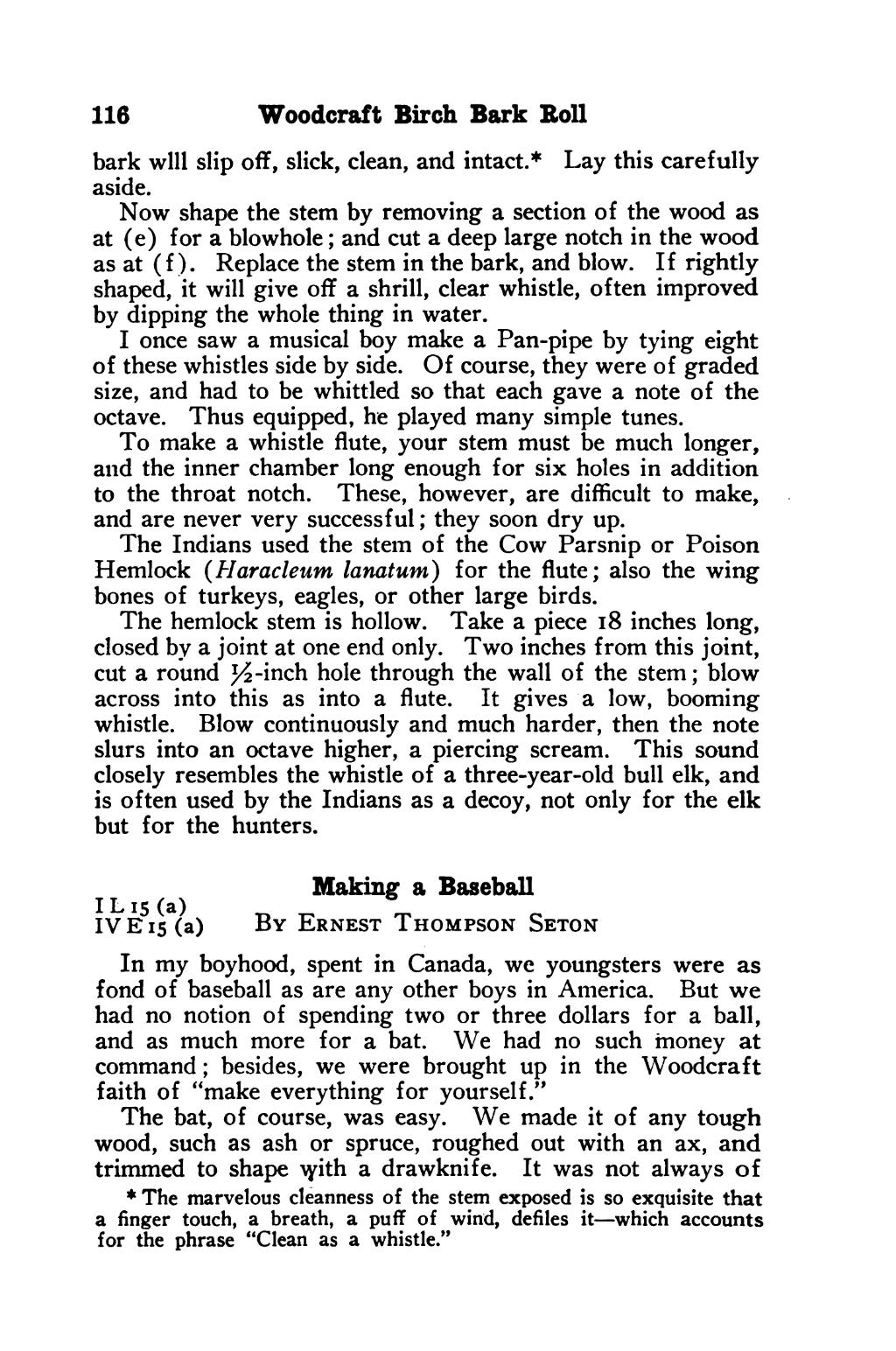116 Woodcraft Birch Bark Roll bark willl slip off, slick, clean, and intact.* Lay this carefully aside. Now shape the stem by removing a section of the wood as at (e) for a blowhole; and cut a deep large notch in the wood as at (f{). Replace the stem in the bark, and blow. If rightly shaped, it will give off a shrill, clear whistle, often improved by dipping the whole thing in water. I once saw a musical boy make a Pan-pipe by tying eight of these whistles side by side. Of course, they were of graded size, and had to be whittled so that each gave a note of the octave. Thus equipped, he played many simple tunes. To make a whistle flute, your stem must be much longer, and the inner chamber long enough for six holes in addition to the throat notch. These, however, are difficult to make, and are never very successful; they soon dry up. The Indians used the stem of the Cow Parsnip or Poison Hemlock (Haracleum lanatum) for the flute; also the wing bones of turkeys, eagles, or other large birds. The hemlock stem is hollow. Take a piece 18 inches long, closed by a joint at one end only. Two inches from this joint, cut a round ¥%-inch hole through the wall of the stem; blow across into this as into a flute. It gives a low, booming whistle. Blow continuously and much harder, then the note slurs into an octave higher, a piercing scream. This sound closely resembles the whistle of a three-year-old bull elk, and is often used by the Indians as a decoy, not only for the elk but for the hunters. IL 15 (a) Making a Baseball IV E'r5 (a) By Ernest THOMPSON SETON In my boyhood, spent in Canada, we youngsters were as fond of baseball as are any other boys in America. But we had no notion of spending two or three dollars for a ball, and as much more for a bat. We had no such money at command ; besides, we were brought up in the Woodcraft faith of “make everything for yourself.” The bat, of course, was easy. We made it of any tough wood, such as ash or spruce, roughed out with an ax, and trimmed to shape with a drawknife. It was not always of
- The marvelous cleanness of the stem exposed is so exquisite that
a finger touch, a breath, a puff of wind, defiles it—which accounts for the phrase “Clean as a whistle.”
